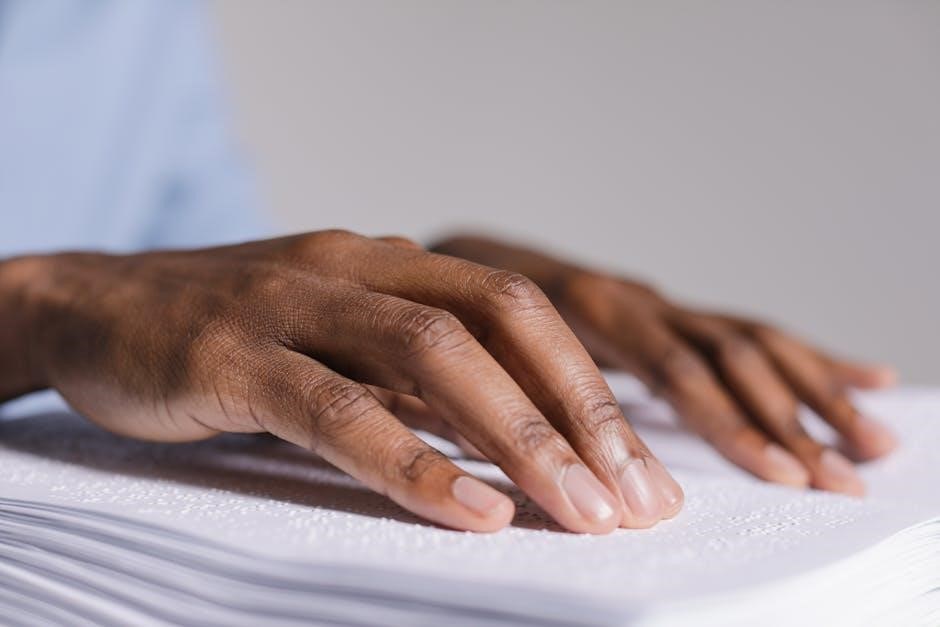
muscular system study guide
The muscular system is a complex network of tissues enabling movement, posture, and heat generation. It comprises skeletal, smooth, and cardiac muscles, essential for body function and mobility, studied using tools like flashcards and 3D models.
1.1 Importance of the Muscular System
The muscular system plays a vital role in the human body, contributing to movement, posture, and overall physiological functions. It enables mobility by contracting and relaxing muscles, allowing activities like walking, running, and even fine motor tasks. Additionally, muscles help maintain posture by stabilizing the body and supporting skeletal structures. The muscular system also generates body heat through muscle contractions, which is essential for maintaining normal body temperature. Furthermore, it aids in circulating blood and facilitating digestion through involuntary muscle movements. Understanding the muscular system is crucial for fields like medicine, physical therapy, and sports science, as it underpins movement and overall health. This system’s functions are integral to daily life, making its study fundamental for comprehending human anatomy and physiology.
1;2 Overview of the Muscular System
The muscular system is a dynamic and interconnected network of tissues responsible for movement and support. It consists of three primary types of muscles: skeletal, smooth, and cardiac. Skeletal muscles are attached to bones, enabling voluntary movements. Smooth muscles line internal organs, facilitating involuntary actions like digestion. Cardiac muscle, found exclusively in the heart, ensures continuous blood circulation. Together, these muscles work synergistically to maintain bodily functions. The system is organized into muscle groups, each serving specific roles, such as the muscles of the head, neck, limbs, and trunk. This structured organization allows for precise coordination and efficiency in performing various tasks. The study of the muscular system involves understanding its anatomy, physiology, and functions, providing insights into human movement and overall health.

Types of Muscles
The muscular system comprises three primary muscle types: skeletal, smooth, and cardiac. Each type varies in structure, function, and location throughout the body.
2.1 Skeletal Muscles
Skeletal muscles are the most prominent type, attached to bones via tendons, enabling voluntary movements. They are striated and under conscious control, allowing actions like walking or writing. Comprising bundles of long, multinucleated muscle fibers wrapped in connective tissue, skeletal muscles facilitate movement by contracting across joints. Key examples include the sternocleidomastoid in the neck and the deltoid in the shoulder. These muscles are essential for locomotion, posture maintenance, and manipulating objects. Their structure, including epimysium, fascicles, and perimysium, ensures efficient force generation. Studying skeletal muscles involves memorizing their attachments, actions, and innervations, often using tools like flashcards or 3D models. Understanding their mechanics is vital for fields like anatomy, physiology, and physical therapy, as they directly impact mobility and overall bodily function.
2.2 Smooth Muscles
Smooth muscles are non-striated, involuntary tissues found in the walls of hollow organs like the digestive tract, blood vessels, and airways. They function without conscious control, regulating processes such as digestion and blood pressure. Unlike skeletal muscles, smooth muscles operate slowly and rhythmically, often in response to autonomic nervous system signals. Their structure lacks the orderly arrangement of sarcomeres seen in skeletal muscles, allowing for sustained, low-force contractions. Examples include the orbicularis muscles around body openings. Smooth muscles play a crucial role in propelling substances through organs, such as moving food through the intestines. Their study involves understanding their unique physiology and role in maintaining internal bodily functions, often through detailed diagrams and study guides that highlight their structure and function in various systems. This knowledge is essential for comprehending human physiology and treating related disorders.
2.3 Cardiac Muscles
Cardiac muscles are specialized, involuntary tissues exclusively found in the heart. They are responsible for pumping blood throughout the body, ensuring a continuous supply of oxygen and nutrients. Unlike skeletal muscles, cardiac muscles are branchable and contain intercalated discs, which allow synchronized contractions. These muscles operate autonomously, regulated by the heart’s intrinsic conduction system, though they can be influenced by the autonomic nervous system. Cardiac muscles are vital for maintaining circulatory function and overall bodily health. Their study involves understanding their unique structure, such as the presence of a single nucleus per cell, and their ability to generate rhythmic, powerful contractions. This knowledge is crucial for grasping cardiovascular physiology and addressing conditions related to heart function, often explored through detailed anatomy guides and study materials.

Functions of the Muscular System
The muscular system performs essential functions, including movement, maintaining posture, and generating body heat through muscle contractions. These roles are vital for daily activities and overall bodily stability.
3.1 Movement and Mobility
Movement and mobility are primary functions of the muscular system, enabling the body to perform various physical activities. Muscles work in pairs to flex, extend, or rotate joints, allowing actions like walking, running, or lifting. Skeletal muscles, attached to bones via tendons, contract and relax to move bones across joints. For example, the sternocleidomastoid muscle facilitates neck movements, while the deltoid enables arm flexion. Smooth muscles, found in internal organs, assist in involuntary movements, like propelling food through the digestive tract. The nervous system coordinates these muscle actions, ensuring precise and controlled movements. This intricate system allows individuals to interact with their environment efficiently, making movement and mobility fundamental to daily life and overall functionality. The muscular system’s ability to generate force and motion is essential for maintaining an active and healthy lifestyle.
3.2 Maintenance of Posture
Maintenance of posture is a critical function of the muscular system, involving the coordinated action of various muscle groups. Muscles work tirelessly to support the body’s alignment, preventing excessive flexion or extension. Key muscles like the erector spinae in the back and the trapezius in the shoulders contribute to upright posture by stabilizing the spine and head. Postural muscles contract tonically, providing steady tension to maintain balance. This function is both voluntary and involuntary, as the nervous system constantly adjusts muscle tone to counteract gravity. Without these muscles, activities like standing or sitting upright would be impossible. Proper posture not only enhances physical comfort but also supports organ function and overall bodily efficiency, making it a vital aspect of daily life and health. The muscular system’s role in posture is essential for maintaining structural integrity and facilitating movement.
3.3 Generation of Body Heat

Muscles play a vital role in generating body heat through their metabolic activity. When muscles contract, whether voluntarily or involuntarily, they produce heat as a byproduct of cellular respiration. This process is essential for maintaining the body’s internal temperature. Shivering, an involuntary muscle contraction, is a key mechanism for rapid heat production in cold environments. Even at rest, muscles contribute to basal metabolic rate, releasing heat to warm the body. This function is closely regulated by the nervous system, ensuring thermogenesis aligns with the body’s needs. The muscular system’s ability to generate heat is crucial for maintaining homeostasis, enabling the body to function optimally in various environmental conditions. This process underscores the integral role of muscles in overall bodily health and energy balance.

Structural Organization of Muscles
Muscles are organized into fascicles, surrounded by connective tissue like epimysium and perimysium. Muscle fibers within fascicles are encased in endomysium, enabling efficient contraction and movement through tendon attachments.
4.1 Skeletal Muscle Tissue
Skeletal muscle tissue is the most abundant type of muscle in the human body, attached to bones via tendons. It is voluntary, meaning its movements are under conscious control. This tissue is organized into fascicles, bundles of muscle fibers wrapped in connective tissue called perimysium. Each muscle fiber is a long, multinucleated cell containing myofibrils, which are composed of sarcomeres—the functional units of contraction. Surrounding the entire muscle is the epimysium, a thick layer of connective tissue that protects and supports the muscle. Skeletal muscle tissue is essential for movement, posture, and heat production, working in coordination with the nervous system to facilitate precise and powerful contractions. Its unique structure allows for rapid responses to stimuli, making it vital for activities like walking, running, and lifting.
4.2 Muscle Fibers and Fascicles
Muscle fibers are long, cylindrical cells that make up skeletal muscle tissue. Each fiber is wrapped in a thin layer of connective tissue called endomysium. Multiple muscle fibers are grouped together to form fascicles, which are encased in a thicker layer of connective tissue known as perimysium. This organization allows for efficient contraction and protection of the fibers. The entire muscle is then surrounded by epimysium, providing additional support and structure. This hierarchical arrangement ensures that muscles can function effectively, enabling precise and powerful movements. The alignment of muscle fibers within fascicles also facilitates synchronized contraction, which is essential for coordinated body movements and maintaining posture. This structural organization is a key feature of skeletal muscle, distinguishing it from smooth and cardiac muscles.
4.3 Types of Muscle Fibers
Muscle fibers are categorized into distinct types based on their physiological and structural characteristics. The primary types are Type I (slow-twitch) and Type II (fast-twitch) fibers. Type I fibers are designed for endurance, relying on aerobic respiration for energy. They are efficient at sustaining long-term, low-intensity activities and are resistant to fatigue. In contrast, Type II fibers are specialized for strength and speed, utilizing anaerobic respiration for quick, high-intensity movements. They fatigue rapidly but generate significant force. A subtype of Type II fibers, known as Type IIx, is particularly powerful but less endurance-capable. The proportion of these fiber types varies among individuals, influencing athletic performance and muscle function. Understanding these differences is crucial for optimizing physical training and rehabilitation strategies. This classification highlights the adaptability of muscle tissue to meet diverse functional demands.

Key Muscles by Body Region
The muscular system is organized into key regions, including the head, neck, upper limb, and trunk. Major muscles like the sternocleidomastoid, trapezius, deltoid, and biceps are essential for movement and stability.
5.1 Muscles of the Head and Neck
The muscles of the head and neck are crucial for facial expressions, movement, and support. Key muscles include the sternocleidomastoid, which rotates the head and flexes the neck, and the trapezius, involved in scapular movement. The buccinator muscle plays a role in compressing the cheek against the teeth, aiding in chewing and directing food. These muscles are attached to bones and other structures, enabling functions like head rotation and neck flexion. Their coordinated actions are essential for daily activities, such as eating, speaking, and maintaining posture. Understanding these muscles is vital for studying anatomy, as they illustrate the intricate relationship between movement and structural support in the upper body. Proper identification and memorization of these muscles are key for students and professionals in the medical field, enhancing knowledge of human anatomy and physiology.
5.2 Muscles of the Upper Limb
The upper limb muscles are essential for movement and functionality of the arms, shoulders, and hands. Key muscles include the deltoid, responsible for shoulder flexion, extension, and rotation, and the biceps brachii, which facilitates elbow flexion and forearm supination. The triceps brachii extends the elbow, while the pectoralis major aids in movements like pushing and throwing. These muscles work in pairs to enable a wide range of motions, from lifting to gripping. Proper study of these muscles is crucial for understanding upper limb anatomy, as they are integral to both voluntary movements and maintaining daily activities. Students often use tools like flashcards and 3D models to memorize and visualize their attachments and functions, making them indispensable for effective learning and application in fields like medicine and physical therapy. Mastering these muscles enhances overall comprehension of the musculoskeletal system.
5.3 Muscles of the Lower Limb
The lower limb muscles are vital for locomotion, balance, and supporting the body’s weight. Key muscles include the quadriceps femoris, which stabilizes and extends the knee, and the hamstrings, responsible for knee flexion and hip extension. The gastrocnemius and soleus work together to plantarflex the foot, enabling walking and running. The gluteal muscles, such as the gluteus maximus, play a crucial role in hip extension and lateral movement. These muscles are organized into groups that facilitate coordinated movements, from walking to jumping. Studying these muscles is essential for understanding lower limb function, especially in activities requiring strength and endurance. Tools like anatomy charts and 3D models are often used to visualize their structure and function, aiding in effective learning and application in fields such as sports medicine and physical therapy. Proper comprehension of these muscles enhances overall musculoskeletal system knowledge.
5.4 Muscles of the Trunk
The trunk muscles form the core of the body, providing stability, posture, and movement for the torso. Key muscles include the rectus abdominis and external obliques, which facilitate flexion, extension, and rotation of the abdomen. The erector spinae group runs along the spine, enabling upright posture and vertebral movement. The latissimus dorsi and pectoralis major contribute to movements like adduction and rotation of the shoulders. Deep muscles like the transversospinales support spinal stability. These muscles work together to enable activities such as sitting, twisting, and lifting. Studying trunk muscles is crucial for understanding core strength and its role in overall mobility. Tools like anatomy charts and 3D models help visualize their layered structure and functions, making them essential for comprehensive study and practical application in fields like physical therapy and fitness training. Proper knowledge of these muscles enhances understanding of the musculoskeletal system’s role in daily movements and maintaining posture.

Tools for Studying the Muscular System
Effective tools include flashcards, anatomy worksheets, and 3D models. Flashcards aid memorization of muscle names and functions, while worksheets and charts provide visual learning. Interactive 3D models enhance understanding of muscle structure and placement, making complex anatomy accessible for students and professionals alike.
6.1 Flashcards and Quizlet
Flashcards and Quizlet are powerful tools for studying the muscular system. Flashcards allow learners to memorize key terms, such as muscle names, types, and functions, in an organized manner. Quizlet offers interactive features like matching games, tests, and study modes, enhancing retention and understanding. For example, users can quiz themselves on identifying the three types of muscles—skeletal, smooth, and cardiac—and their respective roles. Flashcards are portable and can be used anywhere, making them ideal for quick review sessions. Additionally, Quizlet’s digital platform provides access to pre-made decks and the ability to create custom sets, catering to individual learning needs. These tools are particularly effective for visual and kinesthetic learners, helping to break down complex anatomy into manageable chunks for efficient study.
6.2 Anatomy Worksheets and Charts

Anatomy worksheets and charts are essential tools for studying the muscular system. These resources provide detailed diagrams and exercises to help learners identify and label muscles by body region. Worksheets often include activities such as matching muscle names to their functions or locating them on anatomical illustrations. Charts offer visual representations of muscle groups, making it easier to understand their relationships and roles. Many worksheets are available in PDF format, allowing users to print and complete them for hands-on learning. They cover topics like skeletal, smooth, and cardiac muscles, as well as their attachments and actions. Anatomy worksheets are particularly useful for reinforcing concepts learned in class or from textbooks, making them a valuable addition to any study routine. They are also great for self-study and can be customized to focus on specific areas of interest or difficulty.
6.3 3D Anatomy Models
3D anatomy models provide an interactive and immersive way to study the muscular system. These models allow users to explore muscles in detail, rotating and zooming to visualize their structure and relationships with other tissues. Platforms like InnerBody offer comprehensive models of muscle groups, such as those in the arms, legs, chest, and back. These tools are particularly useful for understanding how muscles interact during movements and how they are layered within the body. Many models include labels and descriptions, enabling users to identify specific muscles and learn their functions. 3D anatomy models are invaluable for students, educators, and healthcare professionals, as they enhance spatial understanding and retention of complex anatomical information. They complement traditional study materials by offering a hands-on, visual learning experience that can be accessed anytime and anywhere.
7.1 Summary of Key Concepts
The muscular system, comprising skeletal, smooth, and cardiac muscles, is essential for movement, posture, and heat production. Skeletal muscles, attached to bones, enable voluntary actions, while smooth muscles regulate internal functions. Cardiac muscles power the heart. Tools like flashcards, worksheets, and 3D models aid in mastering muscle anatomy and physiology, emphasizing their roles in body mechanics and overall health. Understanding muscle types, functions, and organization enhances appreciation of human anatomy and physiology, reinforcing the importance of continued study for comprehensive knowledge.
7.2 Importance of Continued Study
Continued study of the muscular system is crucial for a deeper understanding of its intricate functions and interconnections with other body systems. By exploring topics like muscle tissue structure, fiber types, and regional anatomy, learners gain insights into the mechanics of movement and posture. Tools such as flashcards, worksheets, and 3D models enhance retention and practical application of knowledge. For students in fields like medicine, physical therapy, or anatomy, mastering the muscular system is foundational for diagnosing and treating conditions. Regular review and engagement with study materials ensure long-term retention and proficiency, making continued study an essential part of mastering human anatomy and physiology. This ongoing effort fosters a comprehensive understanding of how muscles contribute to overall health and function.